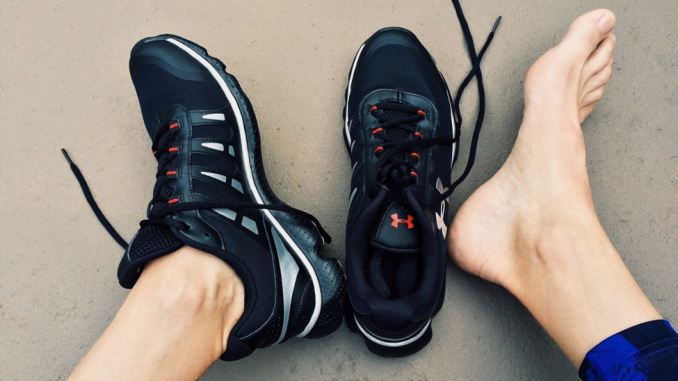Knowing your foot type is crucial for people who are into sports or spend most of their day on their feet. That’s because depending on your type of feet, your motion will change, affecting your impact on the ground. When running, your foot type will determine your stroke and, in turn, can have a severe impact on your posture or joints or even lead to injuries. Here are the different foot types and their impact on your running technique.
Types of Foot:
There are three different foot types: low arch, neutral arch, and high arch. According to the height of your arch, the direction, as well as how your feet roll when impacting the ground, could change.
- Low arch: Having a low arch means that it is very likely that your foot rolls inwards as you move. This is also known as overpronation and it means that, when you take a step as you walk or run, your heel hits the ground first, making your foot roll inwards onto the arch.
- Neutral arch: Having a neutral arch means that you have normal pronation and that the foot first rolls inwards and then outwards as your heel hits the ground, supporting your body weight. This means that your foot rolls to a healthy spot.
- High arch: Having a high arch means that your foot tends to underpronate or doesn’t roll inwards very far, causing the foot to put more pressure on the ankle and toes as it is pushing forward.
Determining Your Foot Type:
Knowing your foot type can help you choose the right shoes that can provide you with the support you need and avoid injuries. Foot specialists at findmyfootwear explain that you can identify what foot type you have by taking a look at the shoes you regularly wear while running. If you find that your shoes show even wear and tear, then you have a neutral arch. If you realize that the inner soles of your shoes show a lot more wear, then your feet tend to overpronate and have a low arch. You’ll also be able to identify a high arch foot type if your shoe shows excessive wear on the outer soles.
How Your Foot Type Can Impact Your Running?
Your foot type and how your feet hit the ground can affect the muscles and joints as well as your ability to keep on running. That’s because of the different arch types, each force a different part of the foot to strike the ground and push forward in a different manner. Knowing your foot type can allow you to prevent any injuries from occurring by pressuring specific muscles or leaning forward and placing too much force on certain body parts.
Once you know your foot type, you can make up for the way your feet strike the ground by getting the support you need from your shoes.

Types of Running Shoes:
Stability shoes: If you have a normal arch and normal pronation, then stability shoes are the type of shoes you should be getting. These types of shoes offer extra stability through the high-density foam and extra arch support, making them more comfortable. You’ll be able to get both rear and front foot stability due to their design which includes a gentle arch from front to back.
Motion-control shoes: Runners with flat feet tend to overpronate and these types of shoes can really be helpful with this issue because motion control shoes usually have rigid devices to help fill in the arched area and make it more suitable for people with low arches to get the support they need. This also increases the stability by using rigid materials such as plastic, fiberglass, or high-density foam, making it difficult for the heel to impact the ground and prevents the foot from overpronation.
Cushioning shoes: While underpronation isn’t as popular as overpronation, it can still affect a runner’s posture and its effect on the body. That’s why people with high arches should use cushioning shoes to prevent underpronation. The flexibility these shoes offer due to their light weight allows the shoes to curve more and add more cushioning to the foot leading it to the right amount of pronation.
If you’re an avid runner, it is crucial to make sure that you’re wearing the right shoes that are appropriate for your foot type. So, before you buy your next pair of running shoes, check where the signs of wear are on your current shoes to determine your foot type and help make a decision to help give your feet the support they need.

